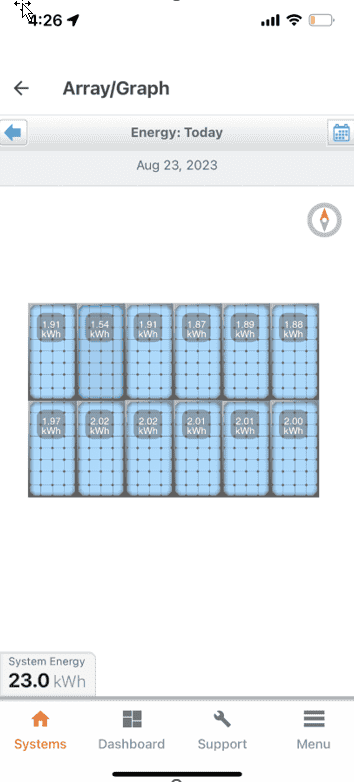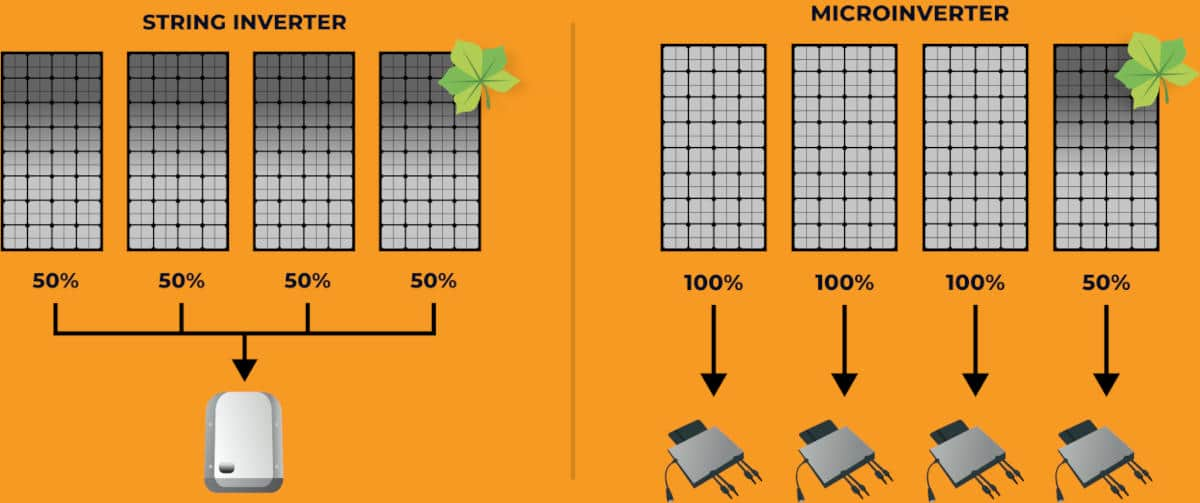- 020 8087 0216
- enquiries@tarvenlimited.co.uk
- Call Us Now : 020 8087 0216
- enquiries@tarvenlimited.co.uk
With so many solar panel brands on the market, understanding the differences between them all can be overwhelming and confusing. The two solar brands that we recommend the most to our customers are Enphase and Sunsynk. In a nutshell, they are both excellent brands but have differing key features – all of which stem from the different type of inverter that is used to convert the electricity that a solar panel generates so it is useable in our homes.
Tarven Solar Energy Director, Jake Syrocki, provides his expert explanation on the differences between microinverters and string inverters to help you decide which brand of solar panels would suit your requirements, preferences, and budget the best.
When choosing solar panels, it all comes down to the inverter! An inverter is one of the most important pieces of equipment in a solar energy system. It is the device that converts direct current (DC) electricity, which is what a solar panel generates, to alternating current (AC) electricity, which the electrical grid (that powers our homes) uses.
Enphase microinverters are attached/retrofitted to solar panels – any panel can be used, while other brands, such as Sunsynk, use string inverters. Microinverters are connected to each solar panel, whereas a single string inverter will serve up to ten panels.


The sound similar, don’t they? However, which one you choose will make a significant difference in terms of effectiveness, safety, cost, and ROI. So, let’s look at each of these points:
When it comes to safety, microinverters (Enphase) seem to have the upper hand. As explained earlier, a microinverter is connected to each solar panel which allows for module-level monitoring – i.e. customers can monitor the energy usage of each solar panel. This not only helps people monitor their energy output, but it also helps pinpoint fault detections and other performance issues, allowing remote troubleshooting and eliminating time-consuming testing of each solar panel. Plus, with microinverters, if one panel does fault, you still have all the other panels in working order. In comparison, a string inverter can serve up to 10 panels. Therefore, if the inverter faults in this scenario, all 10 panels will stop working.
Homeowners with Enphase panels can monitor their energy output (per panel) via an app on their phone like this:
Microinverters (Enphase) are also a safer option in the sense that they convert DC voltage to AC voltage at solar panel level. This means that the energy on your roof remains low-voltage. Plus, they have an overcurrent detection device that trips if it goes into fault or sets alight. Whereas, with string inverters, high-voltage DC current combines and travels across your roof, increasing the risk of electrical fires. They will not be alerted to trip.

A string inverter system can only perform as well as its lowest-performing panel. Therefore, if shade or fallen leaves hinder one panel’s performance, every other panel must operate at a reduced capacity. Because each solar panel can work on its own with microinverters, these systems offer a 5-15% increase in production and efficiency vs string inverters. This is especially true when only a few panels are hindered by shade or under snow. It is for this reason (as well as the aforementioned modular-level monitoring) that we recommend Enphase microinverters on most home solar projects.

While for Enphase microinverters you can expect to pay a premium of 10-15%, you will benefit from a 25-year manufacturer’s guarantee and a system that only has a failure rate of 0.5%. With string inverter brands such as Sunsynk, you will only get a 5-10-year guarantee, meaning that after 5-10 years you will need to replace the inverter. This will likely cost you in the region of £1500. Plus, after another 5-10 years you’ll have to buy another inverter. Meanwhile, the Enphase will still have another 5- years left on its guarantee. So, that 10-15% saving you made upfront on a string inverter will be lost in the long run.
In short, you’ll pay slightly more upfront for the Enphase microinverter, but you will get a much better return on your investment overall. You will also avoid the risk of inverter compliancy as technology progresses during your guarantee period.”
Here’s a handy at-a-glance comparison table to summarise Jake’s points:
| Microinverter (Enphase) | String inverter (other brands) | |
| Electrical safety | Safe AC voltage on the roof | High-voltage DC on the roof |
| Modular-level monitoring | ✔ | ✖ |
| Single point of failure | ✖ | ✔ |
| Warranty | 25 years | 5-10 years |
| Design flexibility | High – adapt to roof space and adapt to design challenges. | Low |
| Modular | ✔ – if you extend your property, you can expand your system. | ✖ |
| Rapid shutdown capability | No additional equipment needed. | Additional equipment needed. |
| Enphase’s newest IQ8 Microinverters are the industry’s first grid-forming microinverters with split-phase power conversion capability to efficiently convert DC power to AC power. Simply put, this means that with IQ8, power essential appliances like lights, fans, phones are still able to run during a daytime power cut, even without a home battery. | ||
If you are interested in home solar but would prefer to chat things through with a professional, Jake would be happy to give you a call or visit you in person. We cover a wide range of areas in London and the South East. Check out our client testimonials for further reassurance regarding our quality products and customer service.